Indian Ringneck Parakeet (Rose-Ringed Parakeet): Bird Species Profile
The Indian ringneck parakeet, also known as the rose-ringed parakeet, is a very beautiful bird, as well as a popular pet. They may not be right for everyone, since they require a lot of attention and care, but they are a very social bird and can become an excellent companion for the entire family.
The typical coloring of this species is bright lime green with blue tail feathers and yellow under the wings. These birds love to talk and enjoy a good challenge, which makes training a ton of fun.
Learn more about the Indian ringneck parakeet, including their temperament and care needs.
Species Overview
Common Names: Indian ringneck parakeet, Indian ringneck parrot, rose-ringed parakeet
Scientific Name: Psittacula krameri manillensis
Adult Size: 16 inches in length including tail feathers and 4 ounces in weight for a medium-sized parrot
Life Expectancy: 25 to 30 years; some instances up to 50 years
Click Play to Learn More About the Colorful Indian Ringneck Parakeet
Origin and History
The Indian ringneck parakeet is an Asiatic subspecies of the rose-ringed parakeet (Psittacula krameri). This is an Asiatic parrot originally from Ceylon. Now you can find them in many parts of Asia, notably India and Pakistan. They also live in the western and southern areas of Sudan and the Middle East.
In the wild, they live in lightly timbered areas, as well as farmed areas of the countryside. They travel in flocks of 100 or more birds, so they are used to having company.
Indian ringneck parakeets have been kept in captivity from as early as 200 B.C. In India, they were regarded as sacred beings after religious leaders began to recognize their ability to mimic human language clearly. Highly regarded by wealthy Indian royals, ringneck parrots were kept in decorative cages and admired for their colors and charming dispositions.
During the 1920s, aviculturists began breeding captive ringnecks, and, with the advent of different color mutations, the popularity of the bird started to explode. Now widely available in the pet trade, Indian ringneck parakeets continue to gain increasing popularity as pets. Their relatively small size and beautiful markings help to make the ringneck the right choice for many bird owners.
Temperament
Although the Indian ringneck has something of a reputation for being nippy and hard to train, it is mostly undeserved. Since they are so smart, ringnecks get bored very quickly and will often resort to chewing and other destructive behavior if they feel neglected.
They also go through a bluffing stage during adolescence that is difficult for some owners to manage. This stage comes with slight aggression, but the phase lasts only a few weeks or months.
Generally, ringnecks handled often and adequately cared for have sweet, charming personalities. Their voice is almost comical, as it is very high-pitched yet soft. You will also notice that they're great at alerting you to danger, a wild instinct that is accompanied by loud calls.
They do not have a reputation for being very affectionate, though females tend to form a stronger bond with people while males are more easy-going. They are generally a low-maintenance bird (if there is really such a thing). Despite their aloof personalities, they do require a lot of time and attention.
Speech and Vocalizations
The Indian ringneck is one of the best talking birds among the domestic species. They can typically start speaking between 8 months and 1 year old, and they can learn more than 200 words. The bird can range from an average speaking level to yelling or screeching, but they are more generally known for their intelligence and quick learning when it comes to speech.
In addition, these birds are great whistlers. They’re quite loud when they screech, though, so they may be unsuitable for people living in apartments.
Indian Ringneck Parakeet Colors and Markings
Ringnecks are available in multiple shades, such as:
- Bright yellow
- Green
- Blue
- Albino
- Cinnamon
- Lutino
Though the color mutations are common, the typical coloring of this species is bright lime green with blue tail feathers and yellow under the wings.
They are known as a dimorphic species, meaning that colors and markings can determine a bird's sex. Males sport deep red beaks, black facial markings, and three bands of color around their necks. The black ring develops at about 18 months, and blue and pink rings appear by the time they reach 3 years old. Females, while still beautiful, lack the facial and collar bands, although some do display a slight darkening of color around their necks.
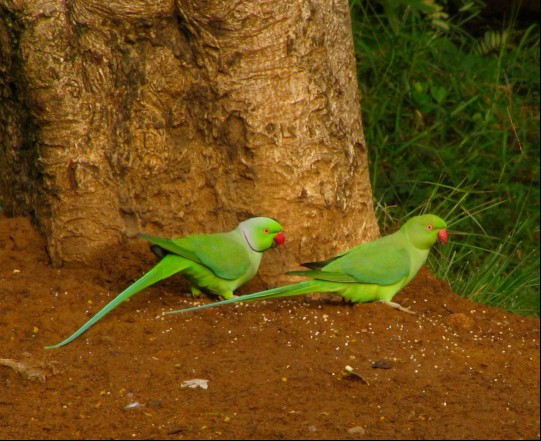
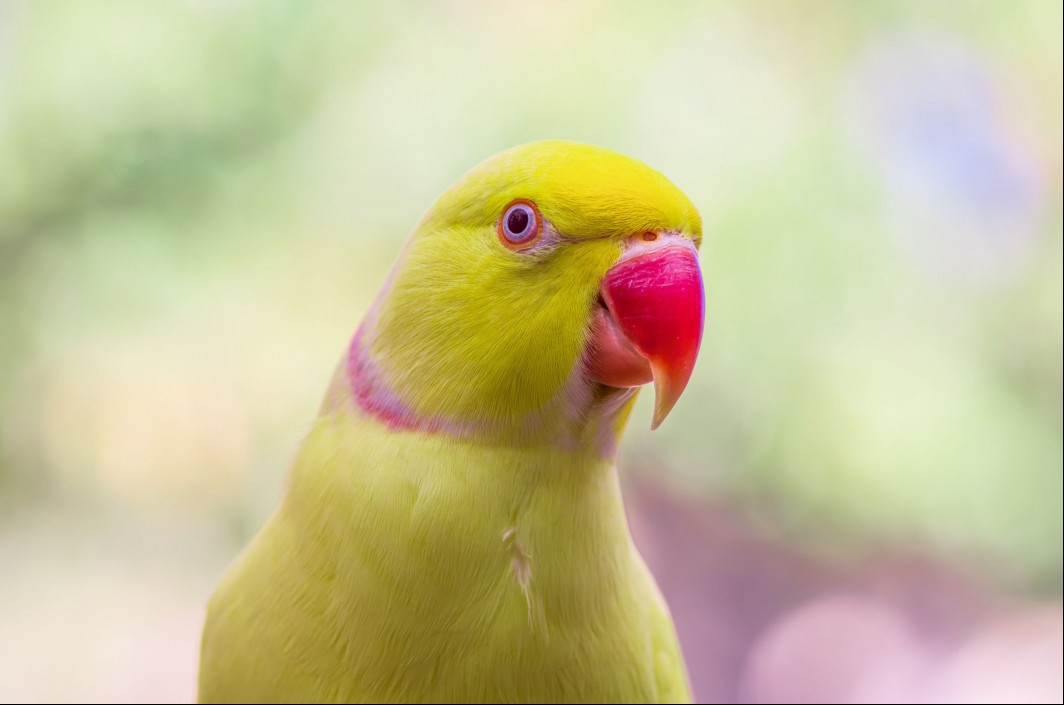
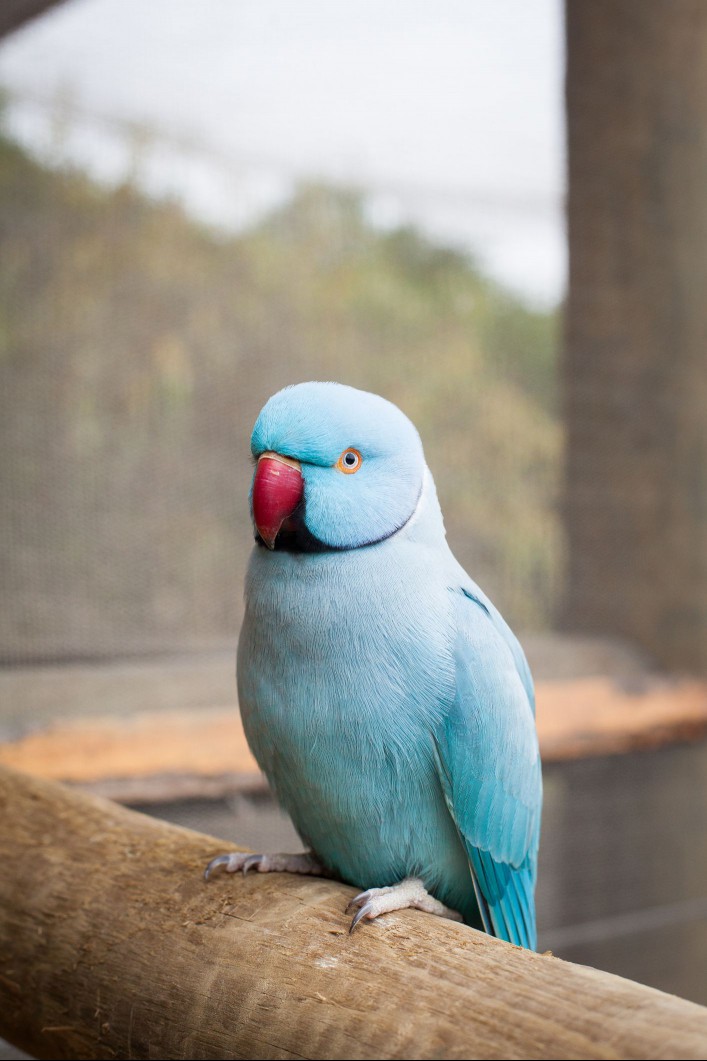
Caring for the Indian Ringneck Parakeet
With adequate attention, handling, and love, an Indian ringneck parakeet can quickly become a beloved companion and family member. They enjoy learning new things and are exceptionally proficient with owners who want to challenge their intelligence. That's one reason they develop such large vocabularies and are great at bird tricks.
If you notice any aggressive behavior, it's best to avoid scolding as the bird can develop a lifetime fear of people. The best way to handle this bird is to ignore bad behavior and use positive reinforcement for good behavior. Also, these birds aren’t ideal for households with children because they’re sensitive to noise and can startle easily.
The cage for this bird needs to be larger than you might expect. It should accommodate their long tail and let the bird hop around and play when you're not around. Make sure the bar spacing isn't large enough for them to get stuck in or escape through; the ideal size is 1/2-inch to 5/8-inch spacing.
Clean the food and water bowl daily, perches and toys weekly, and the floor monthly. Once a year, plan on taking everything outside to be hosed down.
Common Health Problems
While the Indian ringneck parakeet is generally known to be a healthy pet bird, they are prone to common diseases, such as:
- Psittacosis: This is also known as parrot fever, and can be life-threatening. Symptoms include puffy eyes, loss of appetite, nasal discharge, and abnormal droppings.
- Polyomavirus: This affecs young parrots, and it is fatal.
- Aspergillosis: This is a fungal infection that affects the respiratory tract. Symptoms include coughing, difficulty breathing, lethargy, and tail bobbing.
- Bacterial infections: Like other birds, Indian ringneck parakeets are at risk of a number of bacterial infections. They include chlamydiosis and avian mycobacteriosis.
- Feather plucking: If bored, left alone for too long, or depressed, this bird may turn to self-destructive behaviors such as feather plucking.
Diet and Nutrition
Wild Indian ringnecks usually feast on a diet of fruits, vegetables, nuts, berries, and seeds. They also enjoy the nectar from flowers and the flowers themselves.
While most vets agree that it is best for captive birds to eat a nutritionally balanced pelleted diet, a ringneck will appreciate a variety of fruits and vegetables in their diet. Leafy greens and vegetables are crucial for any companion parrot to maintain a nutritionally sound diet, and the Indian ringneck parakeet is no exception.
They can also eat some of the healthy cooked food you would eat, and are particularly fond of chicken, though beans, grains, and rice are also acceptable. Avocados, rhubarb, chocolate, and other common foods are toxic to birds, however, so be careful.
Some ringneck owners find that their bird will sort out and leave behind pellets if they're mixed with seeds. These birds seem picky about eating pellets. If you find that to be the case, offer pellets and seeds separately and rotate them on a regular schedule. They usually come around to pellets.
As a rule of thumb, start off by offering your bird 1/4 cup of pellets and 1/4 cup of fruits and vegetables daily. Increase the amount as needed. Remove the uneaten foods to prevent spoilage.
As with all birds, food and water containers should be emptied, cleaned, and refilled daily to reduce the risk of bacterial growth and infection.
Exercise
Parakeets are very active birds. As with most other bird species, it is a good idea to have a safe area for the pet to play and stretch their wings out of their cage for at least 3 hours each day. Make sure all windows are closed when your bird is out of their cage, and supervise them to ensure they don’t get hurt.
Ringnecks also have powerful jaw muscles to maintain. It is wise to provide an array of chewable toys, perches, and cage accessories, so the bird is less likely to gnaw on something valuable or dangerous. This species enjoys puzzles and any complex toys you can find, which should help keep the bird busy as well.
Providing a mister and a dish of water to bathe in will also keep your feathered friend very happy.
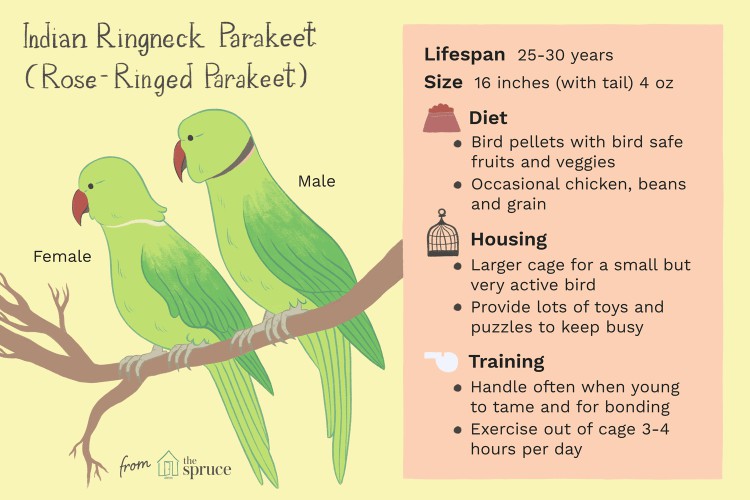
Pros of Indian Ringneck Parakeets
- Social and friendly
- Intelligent and can speak up to 200 words
- Have a funny sounding voice
Cons of Indian Ringneck Parakeets
- Can be loud, so not well-suited for apartments
- Can be more dependent on their owners than other birds
- Can be picky about their food
Where to Adopt or Buy an Indian Ringneck Parakeet
Indian ringnecks are relatively common in the United States and can be rescued, adopted, or purchased at verified organizations like RescueParrots.org or adoption websites like Petfinder. Pricing ranges from $400 to $500, though you can expect to pay up to $700 depending on the organization and the bird.
If you're going the breeder route, make sure that the breeder is reputable by asking them how long they've been breeding and working with Indian ringneck parakeets. Ask for a tour, but don't be alarmed if you are unable to tour the facilities in which they keep the birds. Many reputable breeders opt to work under closed aviaries, which prevents diseases from infecting the flock.
Also, make sure that the bird you want to take home is as healthy. Make sure the parakeet is alert, active, and exhibits all the signs of a healthy bird, such as bright eyes, clean feathers, and full crops.
More Pet Bird Species and Further Research
If you’re interested in similar species, check out:
- Bourke's Parakeet
- Lineolated Parakeet
- Plum-Headed Parakeet
Otherwise, check out all of our other small parrot species profiles.
- Are Indian ringnecks good pets?
For the right pet parents, Indian ringnecks can make great companions, with their fun and social personality. But these birds require a lot of attention and interaction, and can be loud.
How long do Indian ringnecks live?These birds can live 25 to 30 or more years.
How big do Indian ringnecks get?Adult Indian ringnecks measure 16 inches, including their tail feathers.
RECOMMENDED NEWS
 small-birds
small-birdsGloster Canary: Bird Species Profile
Gloster canaries are small birds that are bred for their shape instead of their colors or song. The...
Read More → small-birds
small-birdsCockatiel: Bird Species Profile
The cockatiel is a small parrot who sports a variety of colorful patterns and a head crest. Also kn...
Read More → medium-birds
medium-birdsQuaker Parrot (Monk Parakeet): Bird Species Profile
Quaker parrots (or monk parakeets) are known for their charming, comical personalities and their wi...
Read More → large-birds
large-birds5 Best Large Parrots to Keep as Pets
People often associate the word "parrot" with large, colorful, powerful birds, and rightful...
Read More → bird-health
bird-healthHow to Identify and Get Rid of Parrot Lice
We know that birds are susceptible to many of the same health problems that can affect people, incl...
Read More → bird-health
bird-healthSigns That Your Bird Is Depressed
Not only are birds capable of becoming depressed, but prolonged depression can lead to self-destruc...
Read More → bird-breeds
bird-breedsCitron-Crested Cockatoo: Bird Species Profile
The citron cockatoo is a slightly smaller, quieter, and more subdued variety of the sulphur-crested...
Read More → bird-breeds
bird-breedsGoffin's Cockatoo: Bird Species Profile
A Goffin's cockatoo is the perfect companion parrot if you have the spare time to devote to it. Thi...
Read More → bird-breeds
bird-breeds8 Best Talking Birds to Keep as Pets
Talking birds are popular pets because they can mimic human speech or even perform tricks. While so...
Read More →
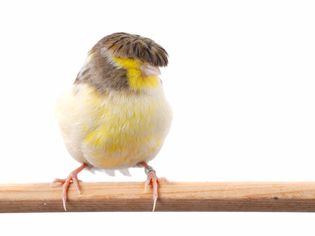
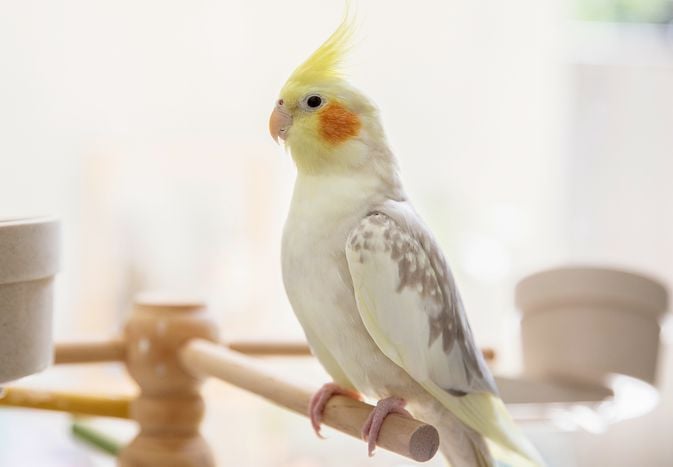
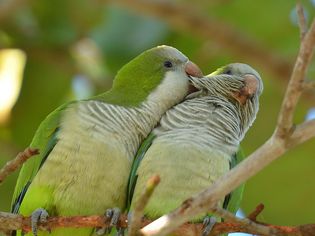
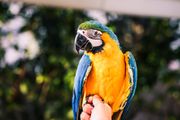
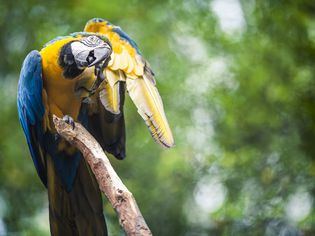
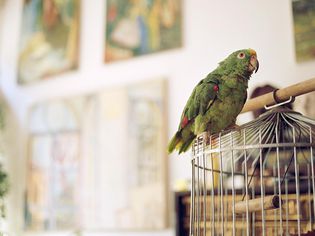
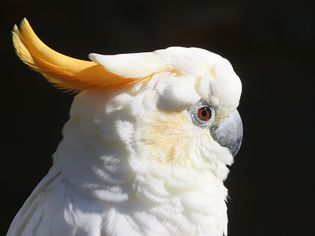
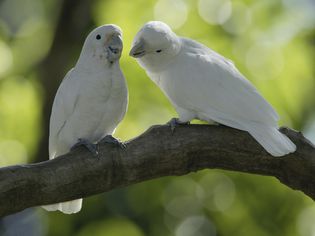
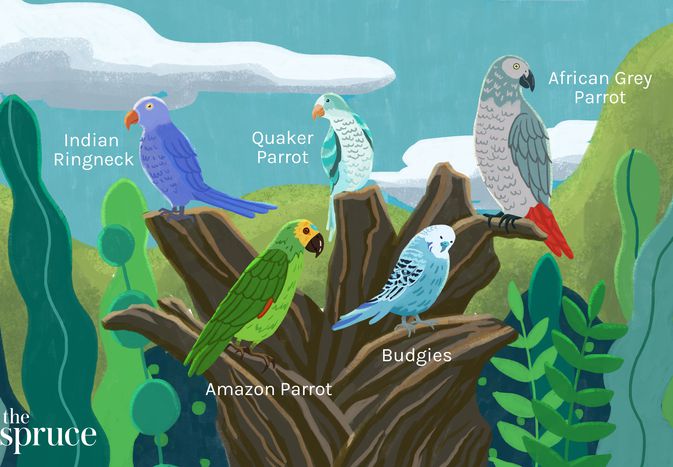
Comments on "Indian Ringneck Parakeet (Rose-Ringed Parakeet): Bird Species Profile" :